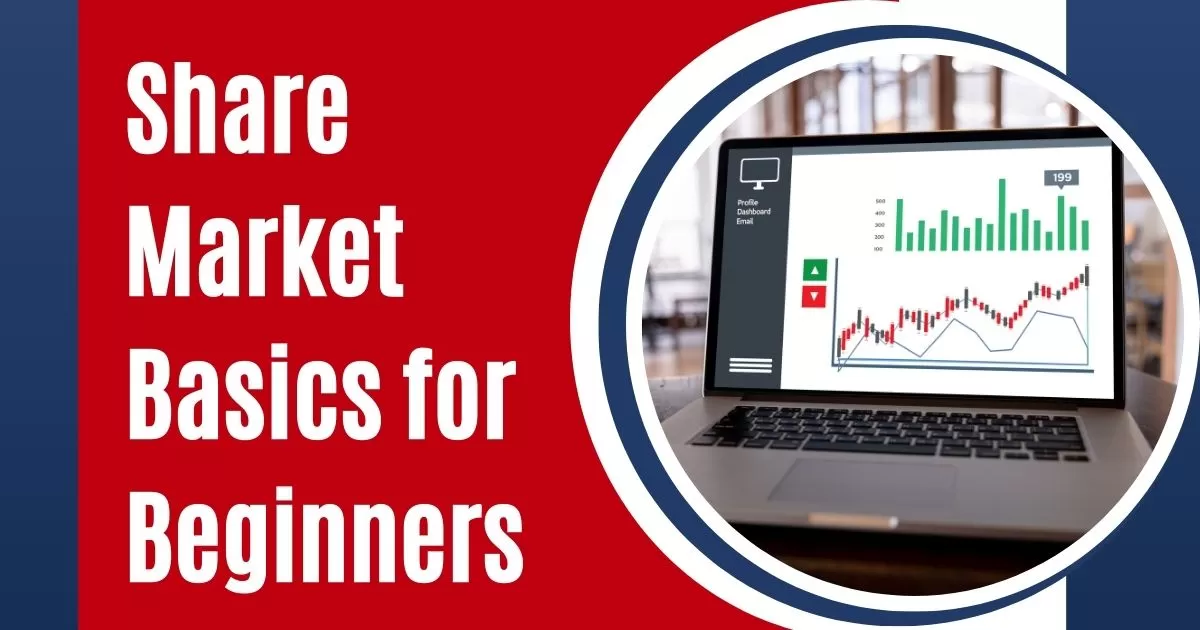You want to start in the share market with confidence. This beginner’s guide explains what shares are, how NSE and BSE work, how to open a Demat and Trading Account, and how to place your first order. You will see INR examples, risk rules, and a weekly routine you can follow. Read and act step by step. When you are ready, enroll in a structured course to stay consistent.
Enroll now in the Stock Market Course for Beginners
- What is the share market
- How the Indian stock market works
- Demat and Trading Account, setup steps
- Order types you will use
- Your first buy, a simple INR example
- How to pick shares as a beginner
- Risk management for new investors
- Costs, fees, and taxes
- Common beginner mistakes and fixes
- A 10-minute weekly routine
- Tools and simple templates
- When should you enroll in a course
- FAQs on share market basics
- Closing
What is the share market
Simple idea
- A share is a unit of ownership in a company.
- The share market is where investors buy and sell these shares.
- In India, trades happen on regulated exchanges through brokers.
- Prices move due to demand, supply, and news.
Primary vs secondary market
- Primary market, companies raise capital by issuing new shares, often through an IPO.
- Secondary market, investors trade existing shares on the exchange.
Quick glossary
- Exchange, NSE or BSE.
- Index, Nifty 50 or Sensex for market trend.
- Broker, a platform to place orders.
- DP, depository participant for your Demat.
- SIP, fixed amount invested on a schedule.
Further learning
Start with a structured path. See Investo Trade Mantra
How the Indian stock market works
Exchanges and indices
- India has two large exchanges, NSE and BSE.
- Nifty 50 and Sensex track top companies.
- Sector indices include bank, IT, auto, and more.
Market timing and settlement
• Regular trading runs Monday to Friday in Indian market hours.
• Most equity trades settle on T+1. Funds or shares arrive next business day.
Key participants
- Retail investors trade via brokers.
- Mutual funds and insurers move large volumes.
- Regulators set rules and protect investors.
Reference links
Demat and Trading Account, setup steps
What you need
- PAN, Aadhaar, bank proof, and address proof.
- Mobile number and email for OTP and alerts.
Steps
- Pick a SEBI registered broker. Compare account opening fees, delivery and intraday charges, and platform reviews.
- Complete e-KYC. Record video KYC if asked.
- Open a Demat via a DP, then link your bank account.
- Receive login details. Change password and enable 2FA.
- Add funds. Start small.
New account checklist
- Read the broker tariff sheet.
- Enable price alerts and order notifications.
- Learn to place a limit order and a stop-loss before your first buy.
- Save your contract notes in a folder.
Practice path
Use free lessons to build habits. Start here
Order types you will use
Market order
Executes at the best available price. Use only when liquidity is high. Avoid during sharp moves.
Limit order
You set the price. The order fills only if the market trades at your price. Use this for most entries.
Stop-loss order
You set a trigger to exit if price moves against you. Place this the moment you enter.
GTT or conditional orders
Good Till Triggered orders help automate entries and exits.
Order types, quick comparison table
| Order type | What it does | When to use | Risk control |
|---|---|---|---|
| Market | Buys or sells at current best price | High liquidity, urgent fill | Low, slippage risk |
| Limit | Fills at your set price or better | Most entries and some exits | High, price control |
| Stop-loss | Triggers exit at set level | Always set on new buys | High, caps loss |
| GTT | Waits for trigger to place order | Planned entries or exits | Medium, depends on setup |
Your first buy, a simple INR example
Scenario
- Budget, ₹10,000
- Instrument, Nifty 50 ETF to start
- Plan, limit buy with a stop-loss
Steps
- Last traded price shows ₹240.
- Place a limit buy at ₹238 for 40 units. Order value ₹9,520.
- Set a stop-loss at ₹226. Risk per unit ₹12. Total planned risk ₹480 plus charges.
- Log the trade with date, price, quantity, charges, and stop-loss.
- Add a monthly SIP reminder for the same ETF.
How to pick shares as a beginner
Fundamental view
- Understand the product and market share.
- Track revenue growth, profit, and debt.
- Check management quality and disclosures.
- Review valuation, P E, P B, and growth.
Technical view
- Trade with the trend on daily charts.
- Mark support and resistance zones.
- Look for breakouts with volume.
- Use moving averages and RSI to confirm.
Balanced approach
Start with an ETF or a large cap. Add one new stock only after a full review. Write your reason to buy and hold. Recheck after each result.
Level up your skills
- Learn chart reading, Technical Analysis Course Online
- Learn financial statements, Fundamental Analysis Course
Risk management for new investors
Simple rules
- Risk only 1 to 2 percent of capital per trade.
- Place a stop-loss on every position.
- Do not average down without a new reason.
- Diversify across 8 to 12 positions.
- Keep a cash buffer.
Position sizing example
Capital is ₹50,000. You risk 1 percent or ₹500 per trade. If your stop sits 5 percent below entry, your position size can be near 20 percent of capital, then adjust for comfort.
Avoid early
- Futures and options.
- Penny stocks and illiquid names.
- Tips from random sources.
Costs, fees, and taxes
What you pay
- Brokerage per order or per trade.
- Exchange and statutory charges.
- STT or stamp duty where applicable.
- DP charges on delivery sell.
- GST on service components.
Reduce costs
- Use limit orders to cut slippage.
- Avoid overtrading.
- Review every contract note.
- Compare brokers once a year.
Common beginner mistakes and fixes
Mistakes
- Buying only because price is rising.
- No stop-loss or plan.
- Ignoring charges.
- Holding losers and exiting winners fast.
- Blindly following tips.
Fixes
- Define entry, stop, and target before the trade.
- Log every trade and review weekly.
- Start with SIPs and large caps.
- Keep risk per trade small.
A 10-minute weekly routine
Five steps
- Review open positions and update stops.
- Note key news for your holdings.
- Add to SIPs first. Consider new entries after.
- Archive contract notes and reconcile P and L.
- Read one guide from the IFMC Blog to improve.
Tools and simple templates
Starter trade log, copy these columns
Date, Symbol, Buy Price, Quantity, Charges, Stop-loss, Target, Exit Price, P and L, Notes.
Broker platform setup
- One watchlist for holdings.
- One watchlist for candidates.
- Price alerts near support or resistance.
- GTT for stop and target.
When should you enroll in a course
Enroll when
- You want a step by step path and practice.
- You need live doubt clearing.
- You want quizzes and worksheets.
- You plan to invest for 10 years and want discipline.
Enroll
Start today with the Stock Market Course for Beginners
FAQs on share market basics
What is the share market in simple words
It is a regulated place where investors buy and sell company shares through brokers using a Demat and Trading Account.
NSE vs BSE, what is the difference
Both are major Indian exchanges with separate listings and liquidity. You can invest through either.Q3. How much money do I need to start
How much money do I need to start
You can begin with a few thousand rupees. Focus on process and risk control.
Which order type should I use as a beginner
Use limit orders for entry. Add a stop-loss to manage risk.
Is intraday trading good for beginners
Start with delivery investing and SIPs. Try intraday only after you build rules and gain consistency.
What costs apply on share trades
Brokerage, exchange and statutory charges, DP charges on delivery sells, and GST where applicable. Check your contract notes.
Closing
You now understand share market basics in India. Follow the steps, keep risk small, and build a habit with SIPs. Add quality stocks after a full review. When you want a guided path, enroll in the beginner course and practice every week.
Enroll
Join the Stock Market Course for Beginners





















